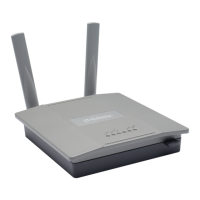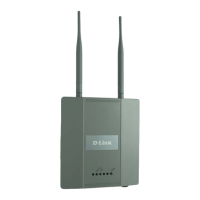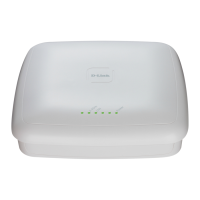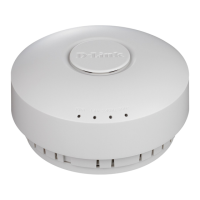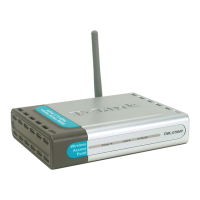Monitoring Status and Statistics
D-Link Unified Wired and Wireless Access System
Oct. 2015 Page 516
D-Link UWS User Manual
Command Buttons
The page includes the following buttons:
• Delete All—Deletes all ad hoc client entries from the list. Clearing the list does not disassociate any of the
ad hoc clients, and the clients might still be involved in the ad hoc network.
• Deny—Blocks an ad hoc client from WLAN access. The MAC address is added to the Known Client
database where the default action is Deny.
• Allow—Allows an ad hoc client access to the WLAN. The MAC address is added to the Known Client
database where the default action is Allow.
• Refresh—Updates the page with the latest information.
Detected Client Status
Wireless clients are detected by the wireless system when the clients either attempt to interact with the
system or when the system detects traffic from the clients. The Detected Client Status page contains
information about clients that have authenticated with an AP as well information about clients that
disassociate and are no longer connected to the system. To access the page click WLAN > Monitoring > Client
> Detected Clients.
The Cluster Controller receives information about associated clients from all switches in the cluster, and you
can disassociate clients on any AP in the cluster from the Cluster Controller.
Table 307: Ad Hoc Client Status
Field Description
MAC Address The Ethernet address of the client. If the Detection Mode is Beacon then the client is
represented as an AP in the RF Scan database and the Neighbor AP List. If the
Detection Mode is Data Frame then the client information is in the Neighbor Client
List.
AP MAC Address The base Ethernet MAC Address of the managed AP which detected the client.
Location The configured descriptive location for the managed AP.
Radio The radio interface and its configured mode that detected the ad hoc device.
Detection Mode The mechanism of detecting this Ad Hoc device. The possible values are Beacon
Frame or Data Frame.
Age Time since last detection of the ad hoc network.
Note: If the Deny button is not available, it means all profiles use Allow as the default MAC
Authentication action. Likewise, if the Allow button is not available, no profiles have an Allow default
action.
Note: If you use RADIUS for MAC authentication in one or more AP profiles, you must add the MAC
Address of the client to the RADIUS database.

